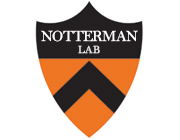Coming up short: Comparing venous blood, dried blood spots & saliva samples for measuring telomere length in health equity research.
Type
BACKGROUND: Telomere length (TL) in peripheral blood mononuclear cells (PBMC) from fresh venous blood is increasingly used to estimate molecular impacts of accumulated social adversity on population health. Sometimes, TL extracted from saliva or dried blood spots (DBS) are substituted as less invasive and more scalable specimen collection methods; yet, are they interchangeable with fresh blood? Studies find TL is correlated across tissues, but have not addressed the critical question for social epidemiological applications: Do different specimen types show the same association between TL and social constructs?
METHODS: We integrate expertise in social epidemiology, molecular biology, and the statistical impact of measurement error on parameter estimates. Recruiting a diverse sample of 132 Metro-Detroit women, we measure TL for each woman from fresh blood PBMC, DBS, and saliva. Using regression methods, we estimate associations between social characteristics and TL, comparing estimates across specimen types for each woman.
RESULTS: Associations between TL and social characteristics vary by specimen type collected from the same woman, sometimes qualitatively altering estimates of the magnitude or direction of a theorized relationship. Being Black is associated with shorter TL in PBMC, but longer TL in saliva or DBS. Education is positively associated with TL in fresh blood, but negatively associated with TL using DBS.
CONCLUSION: Findings raise concerns about the use of TL measures derived from different tissues in social epidemiological research. Investigators need to consider the possibility that associations between social variables and TL may be systematically related to specimen type, rather than be valid indicators of socially-patterned biopsychosocial processes.

